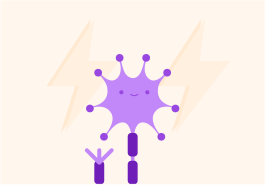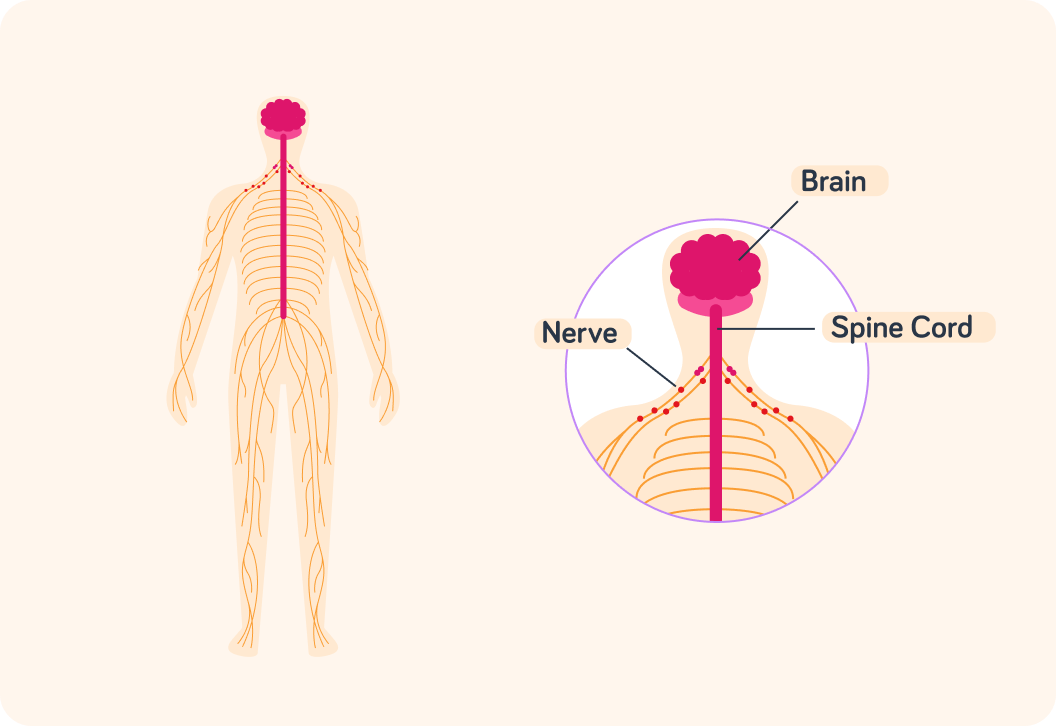YOU ARE LEARNING:
Structure of the Nervous System

Structure of the Nervous System
We will look at the basic structure and function of the nervous system.
Imagine you had trillions of people working on the same project. These people would need to be able to communicate. What would be the most effective way, do you think?

Like people working on a project, the trillions of cells in your body have to be able to communicate and decisions have to be made, so they can work together efficiently. This is what the nervous system is for.
The nervous system has to be able to send messages through the body extremely quickly. What type of impulse do you think the nervous system uses?

This is the nervous system
Electrical impulses are sent through nerves to send messages between different parts of the body.

There are two parts to the nervous system
The central nervous system (CNS) consists of the brain and spinal cord (marked in red). The peripheral nervous system consists of the nerves that carry information between any cells and the central nervous system (marked in orange).

The nervous system controls many different functions
Thinking, muscle movements, breathing, digestion etc.

So, which of these definitions do you think best describes the function of the nervous system?

The nervous system receives information from a stimulus. A stimulus can be many things, for example a hot plate, a loud sound, or your lunch.
Which of these definitions best describes a stimulus?

Information from the environment is picked up by certain cells.
The cells in the peripheral nervous system the pass information about the environment to the central nervous system.
What do you think the cells that receive stimuli from the environment are called?

Sensory receptors...
pass the information along the nerve cells and the nerve cells send the information towards the central nervous system.
The central nervous system then coordinates an appropriate response to the information it has received from the sensory receptors. It passes electrical impulses back along the peripheral nervous system to create an action. What do you think the organ, tissue or cell that produces this action is called?

Which of these can be described as effectors?

You can select multiple answers
Which colour is the central nervous system in this image?


Which colour is the peripheral nervous system in this image?


When you put your hand on a hot iron, you will likely pull your hand away very quickly. Which of these options lists the players involved in this reaction in the correct order?

The information travels from the sensory receptors to the CNS and from the CNS to the effectors via...

To sum up
When you put your hand on a hot iron for example (stimulus), your sensory receptors send a signal via nerve cells to your central nervous system ("Hot hot hot!") who decides what to do about it ("Move hand immediately!"). The central nervous system sends this message via electrical impulses to the effectors that then move the hand. This all happens extremely quickly, as you know if you have ever touched anything burning hot.
